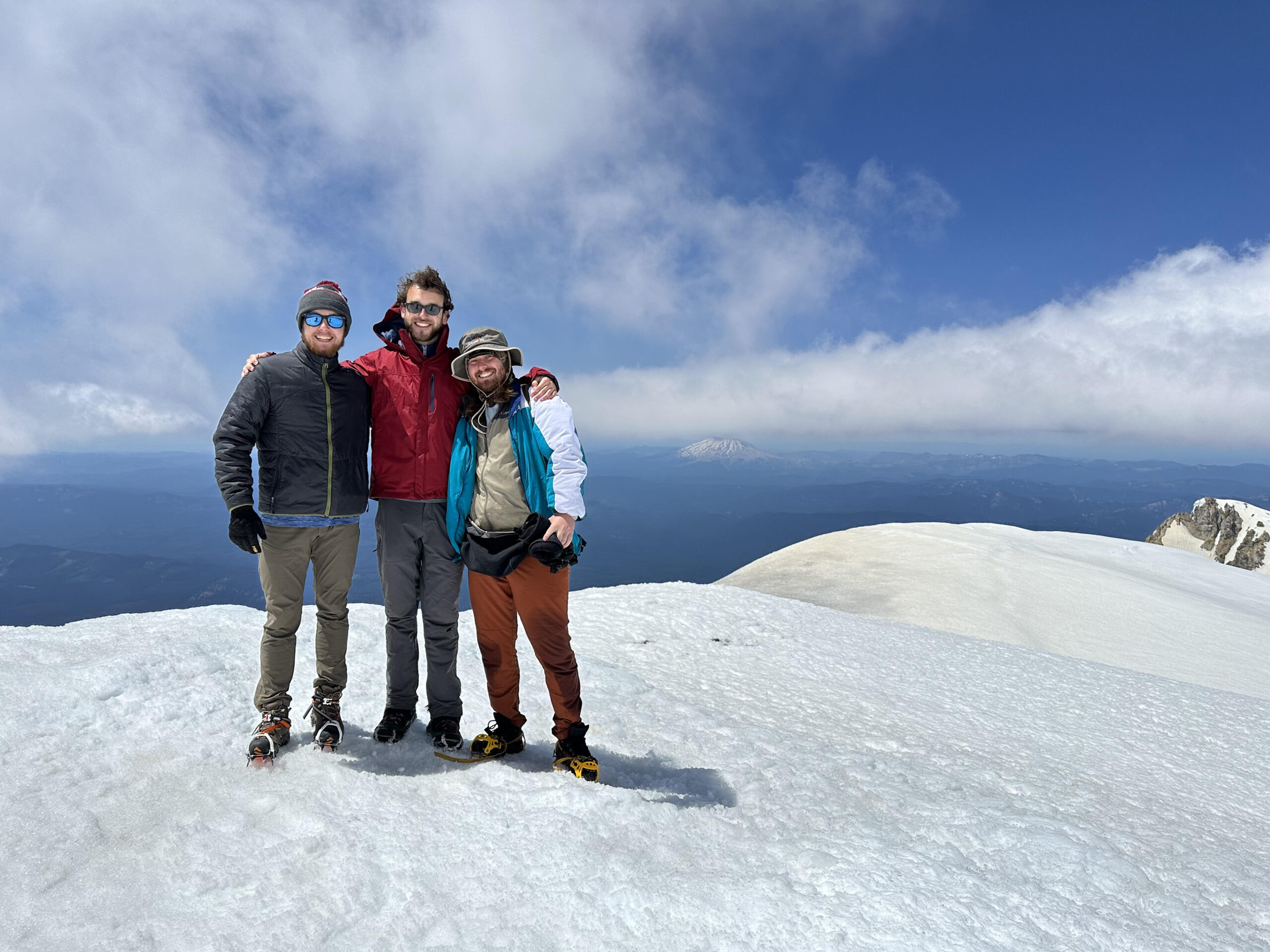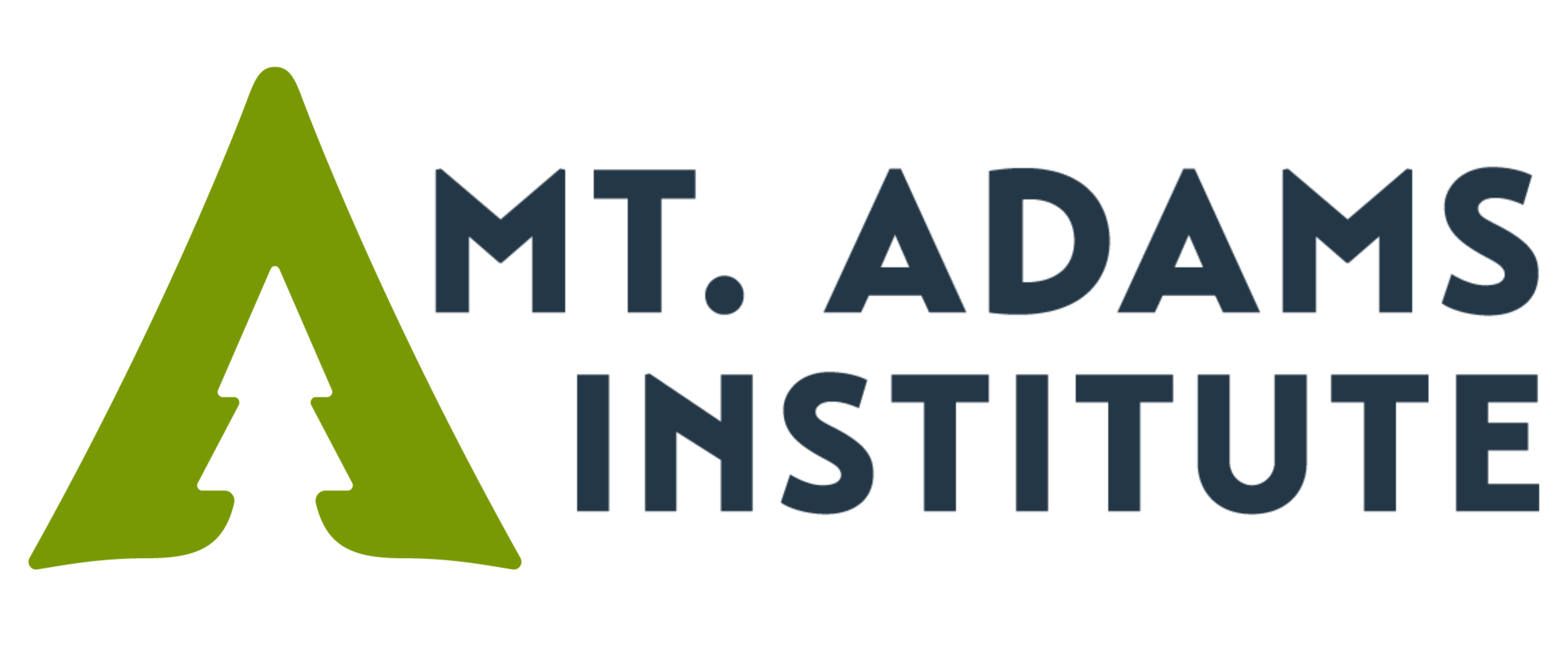Though intimidating at first, this field season has started off wonderfully. With this position (Biotech at Conboy Lake National Wildlife Refuge) being my first-ever field job, I knew I had much to learn. And that I have. The focus of Conboy Lake’s conservational effort revolves around the Oregon Spotted Frog (OSF). OSF is an endangered species that is native to this region and has only been found in pockets of the Cascades of Washington and Oregon. Their population numbers had gotten dangerously low at Conboy Lake in 2020, with only about a hundred egg masses surveyed that season. In the season of 2023, the number of observed OSF egg masses has quadrupled since 2020. Of course, this is amazing news for the OSF, but I wondered how such a dramatic change was possible. My supervisors with AmeriCorps and the Mount Adams Institute had informed me that the primary ecological hurdle for OSFs was the invasive American Bullfrog and that I would be hunting them. I had an idea of what that meant but was unsure of many of the details. What would that look like? How would that be done? How long would we have to hunt bullfrogs to secure a solid ecological niche for OSFs? I didn’t ask any of these questions during the interview process out of fear of looking dumb. Looking back, I’m kind of glad I didn’t because the answers to these questions are greater experienced than explained.
Hunting the bullfrogs is only part of the work. I have learned that to perform this task, there are many organizations with specific skill sets that come together to preserve the OSF species. I have met so many amazing people with years of experience in wildlife conservation. Halfway through the term, I have built relationships with People from MARS (Mount Adams Resource Stewards), which is a very special nonprofit that operates in the Trout Lake and Glenwood Valley of Mount Adams. Their conservational work consists of Invasive species removal, controlled burns, and special types of forestry. The survey work I do is closely tied to the United States Geological Survey (USGS). They rely on us to send them survey data, which they analyze to answer important questions about Bullfrog demographics at Conboy Lake. I was privileged to attend the annual United States Fish and Wildlife (USFW) fisheries council meeting. There, I learned of other refuges in the PNW performing similar work to mine but with different methods and target species. Learning about the goals, methods, and results of other conservation programs in such a collaborative fashion was very enlightening. With the compounding factor of differences in departmental regulations, it’s now apparent to me that there is no “one size fits all” method of conservation.
Honing in on the subject at hand, my short time at Conboy Lake has gifted me so many unforgettable experiences. One of the memories I will never forget is the night I caught and tagged my first bullfrog. I was in a team of 3: my supervisor at Conboy Lake (Robyn), another hunter for MARS (Hannah), and I were conducting a hunt at one of the less popular frogging spots due to its historical lack of mature calling males. When we arrived at 9 pm, we got out of our truck and heard 3 very mature males chorusing together in a swale about 50 meters away from us. Bullfrogs generally call in bouts of 3-10 vocalizations and then stay silent for a few minutes. We approached them together, slowly and meticulously. We frequently turned off our headlamps and stood still in between calling bouts to continuously home in on the frogs. At these times, I love looking up at the stars. On clear nights, you do not need telescopes to indulge in the beauty of the night sky. There is so little light pollution you can observe the milky way in such fine detail. That night was the first time I had seen the true double star of Cygnus and Draco’s entire tail without needing a telescope. After what seemed like 20 minutes of waiting for the Bullfrogs to call, we turned our headlamps back on and kept looking. A few steps later, Robyn sees the first bullfrog, and it’s right in front of me. She points it out to me in a whisper and asks me if I want to observe her hand catch it, as it was my first real hunt. I handed her my gig (forked spear, kind of like a trident) and said no. I then rolled up my sleeves and approached as slowly as I could. If you have never tried to walk stealth fully in knee-deep water in waders, let me tell you, it’s hard. Just as I creep in range of the bullfrog, it descends into the water (dipping, as we call it). The water is clear enough I can see what direction it’s facing and going to propel itself. The frog took too long turning around to flee, and the only thing going through my mind was, “Get my hand on this frog,” so I reached where I thought it was going to go, but I’m not accustomed to moving quickly in waders, let alone wearing them. I fall over in the process, but somehow, my hand finds purchase on the body. I get up soaked, cold, mucky, and bullfrog in hand.
There are many other days that are not so glamorous but interesting all the same. If it’s not hunting, it’s surveying (waterfowl, vegetation, egg mass), fyke net setting/checking, eDNA, data inputting, or preparing for a community outreach event. The Mardon Skipper surveys were the toughest for me because of how elusive they are due to their low population, short lifespan, and inconsistent peak fight period. It didn’t help that there are many other Genera of Skipper in the valley that look almost identical. We went a long time without finding a Mardon skipper, and this was frustrating for me. I remember feeling like I must have misidentified the Mardon for another genera of skipper or that I was incompetent and missed one entirely. I knew this was not the case, but that was how it felt after every unsuccessful attempt at finding one. The truth of the matter is that there is no amount of skill or experience that could magically make these butterflies appear when they simply were not present. We didn’t let this dampen our consistency or eagerness to find them and eventually found 4 confirmed (possibly 5) Mardon Skippers at the tail end of the flight season, all on the same day.
I’m sure there will be many more upsides and downsides to the rest of the field season, but I cannot wait to see the results of our work and how it might influence other conservational projects around the world. Seeing the already monumental comeback of OSF at Conboy Lake gives me hope that other species dangerously close to extinction can persist and possibly thrive once more. Outside of bullfrog work at Conboy Lake, I have found other opportunities to support native species in the PNW. I’ll soon be participating in various bat surveys conducted by the White Nose Syndrome Response Team and The United States Forest Service. I cannot thank all the passionate people I have worked with so far and those I will meet in the future. I really can’t overstate how proud I am to be in this position and how eager I am to do work of such great quality and meaning.

A great way to passively catch aquatic invasive species is to set fyke nets in non-stagnant waterways. This is a picture of the invasive Brown Bullhead Catfish and Bullfrog meta morphs that we caught
on June 27th. The standard practice for fyke nets and to check them 18 hours after they have been set.
This capture process is not lethal, but it is imperative to check these nets on or any time before the 18
hour because of the possibility of bycatch. In the event of capturing a nontarget species, we record the
instance, and the animal is set free.

This is a picture of me conducting eDNA sampling. This process involves using the backpack pump
I’m wearing to draw water through a paper filter. Once a Liter of water has been drawn through the
filter, it is isolated into a vial and sent to USGS for quantitative PCR analysis. Additional data is taken like
water temperature, PH, turbidity etc. This is just one of the many processes that are used to find which
bodies of water have the highest concentrations of bullfrogs.

The most interesting part about this field job is the bullfrog hunts. This is a picture of a massive
(300 grams) female bullfrog that was caught early in their breeding season. Capturing bullfrogs of this
sex and maturity is a high priority for our team because of its gravidity. Had we missed this bullfrog,
there is a high chance it would have found a male to mate with and released tens of thousands of
fertilized bullfrog eggs.

This is a picture of me and two other bullfrog hunters on the summit of Mount Adams. We hiked
about 7,000 feet in elevation, and it took about 6 hours to make it to the top. Amazing first mountain to
summit.
